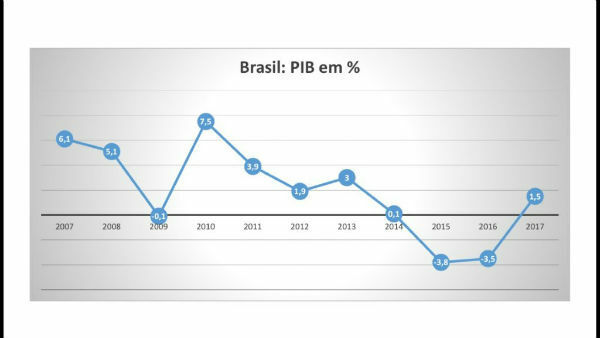O Gross Domestic Product (GDP) is a way of measuring production within a certain period of time.
GDP is calculated from the accounting of goods and services. Thus, the performance of each sector of the economy will affect its composition.
In this way, GDP is the sum of everything that is produced in a city, state and country. Determining factors in the formation of GDP are:
- population consumption;
- business investments in machinery and hiring employees (influenced by the value of salaries and interest);
- government spending on infrastructure.
The values of raw materials, labor, taxes, energy and all intermediate consumption goods are not included in this calculation.
Although each country has its institutes and analysis methodologies, the calculation of GDP is standardized by the National Accounts Manual (System of National Accounts), from 1993.
This document was prepared by the United Nations (UN), the World Bank, the Commission on Communities Unions, the International Monetary Fund (IMF) and the Organization for Economic Cooperation and Development (OECD).
See the 2013 GDP for all countries on the map below:

Brazilian Gross Domestic Product
The Brazilian GDP is calculated and published by the Brazilian Institute of Geography and Statistics (IBGE). The data is released every quarter and the latest result shows a value of R$ 1.641 trillion, revealing a growth of 0.6% compared to the second quarter.
In the chart below we can see the evolution of the Brazilian GDP:

The numbers demonstrate, in recent years, a timid growth of the economy in Brazil.
GDP by States in Brazil
The states that have the highest GDPs in Brazil are located in Southeast region:
- São Paulo, with R$ 1.248 trillion (33.10% of the national total);
- Rio de Janeiro, with R$ 407 billion (10.80% of the national total);
- Minas Gerais, responsible for R$ 351 billion (9.30% of the national total).
GDP per capita
In turn, GDP per capita is obtained by dividing the Gross Domestic Product by the total population of the country or region.
As for the per capita GDP of Brazilians, in 2016, it reached the figure of R$30,407, according to IBGE data released in March 2017.
Read more about Per capita income.
Other Indicators
The GDP data is accompanied by indicators such as the Gross National Product, which is the GDP value considering capital inflows and outflows.
We can still divide the GDP into:
- nominal: based on values calculated at current prices;
- real: calculated at constant prices in order to avoid the effects of inflation in the equations.
Furthermore, the division of nominal GDP by real GDP, multiplied by one hundred, provides a very important piece of information: the deflation rate.
This is used to calculate the inflation and analyze market changes such as price fluctuations.
Ways to Calculate Gross Domestic Product (GDP)
To calculate the Gross Domestic Product, we add data on domestic market consumption (internal expenditure) plus business investments.
We have to add to this account the government expenditures carried out in the analyzed region, considering the balance obtained by exports subtracted from imports.
The sum of all the value generated by companies, the Gross Added Value (GVA) is also a recurrent way of calculating GDP.
Failures in the Gross Domestic Product (GDP) Calculation
Despite measuring the economic activity of a region, GDP disregards factors such as the level of social inequality and income distribution, non-commercial transactions (production for self-consumption, voluntary work, etc.).
Likewise, clandestine negotiations, piracy, goods produced by the informal market and, much less, collateral aspects such as environmental and socioeconomic damages do not enter.
read more:
- Age pyramid
- Economic Crisis in Brazil
- Agribusiness
- Industry
- Trade balance
- Macroeconomics


